- HubPages»
- Home and Garden»
- Home Furnishings»
- Bedding & Linens
Wool And Its History
You don't see as much fur sporting fashion as you did years ago, now that more people are aware of it's cost to the animals who give up their lives (unwillingly I'm sure). So when we do see a picture of a leopard skin coat, or of a lady wearing a sable coat, chances are today, hopefully, that it is synthetic. However, in the wintertime, do we remember that we could be putting on another animal's coat, if we are wearing wool?
Wintertime outer clothes and often inner ones are often made of wool, or some wool blend, which is a product of sheep. Though we can imitate its appearance, we cannot find a real substitute for it.
Wool is really a living part of a sheep; it is produced by the epidermal cells. The difference between wool and hair is that the wool fiber has a covering of pointed scales, or plates, overlapping like fish scales and attached to the fiber at their bases.
This scaly coat can been seen through a microscope. If a wool fibre is drawn through the fingers, a certain roughness can be felt. The overlapping scales, when brought together at an angle, tend to mat together, or "felt."
That is why wool of the sheep is different from all other fibers, animal or vegetable. Among other extremely valuable characteristics of wool fiber are its resilience and elasticity. These properties not only give a soft texture to cloth made of wool, but they also provide strength and resistance to wear.
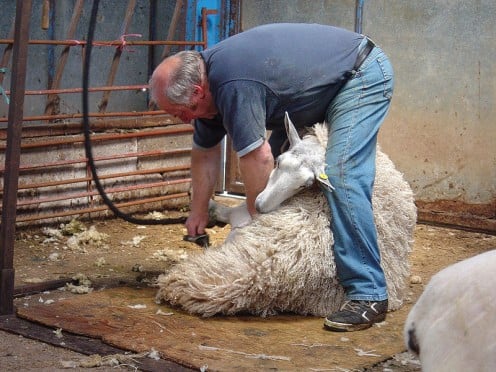
Domesticated Sheep And Wool Production
It is estimated that there are over a million domesticated sheep in the world, and that all these are producing wool that is taken from them once a year and woven into cloth to keep us warm. Previously in history there were more domesticated sheep, but this has changed due to the invention of synthetic fibers in textiles. Harvesting woo, involves no cruelty to the sheep, for it is the same thing for the animal as hair-cutting is for us.
The wool soon grows again, and as the shearing is done in the spring, when the weather is warm, the animal does not suffer from the cold in any way, but is relieved of its burden.
As man, by careful selection and breeding, has produced hens that lay two hundred or more eggs a year in place of the few laid by the original jungle fowl of India, from which our hens are descended, so he has carefully selected sheep with the best coats and has gradually produced a race of animals that now yield on an average nearly twice as much wool as sheep yielded not many years ago.
That is a triumph of scientific stock breeding, and means not only that we get more and better wool, but that wool is made cheaper, because when the quantity of anything is greatly increased, its price falls.
All sheep do not yield the same quality of wool and even the same kind of sheep will produce better wool in one country than in another. The difference is caused by climate and soil. Sheep reared in Australia produce a finer wool than the same kind of sheep brought up in England.
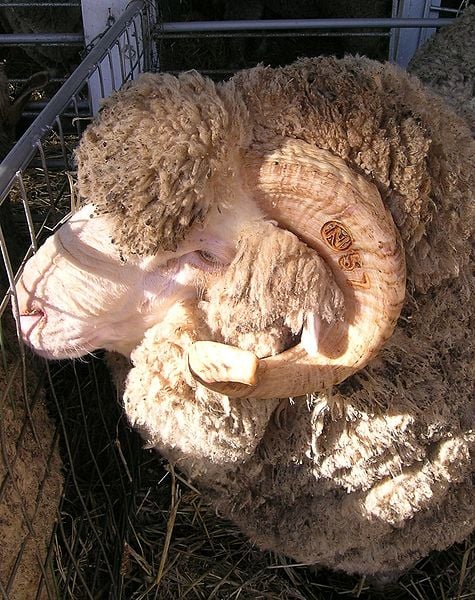
The Merinos
Where wool rather than mutton is desired, merinos are generally kept. The merinos come from Spain, and in the eighth century they were mentioned as providing wool which the conquering Moors made into cloth.
As the centuries passed, the breeding of merinos spread to other European countries. In 1797, some merino sheep were taken to New South Wales, where the hot dry countryside suited them so well that they later became the leading sheep in Australia.
It is known that in 1801, a man named Seth Adams brought a pair of merinos to the Untied States, and the great flocks of the western states are now of that breed. So, too, are Argentinian flocks.
In Canada, the mutton or the general-purpose breeds are more popular. More Canadian wool is raised on farms than on great specialized ranches.
A good ewe sometimes yields fifteen pounds of wool, while a ram yields from twenty to thirty pounds, though the average is much less. Some kinds of merinos have wrinkled skin, which gives more space for wool-bearing, and as a result a bigger yield. There are from sixteen thousand to sixty-one thousand fibers to a square inch of skin on a merino.
The wool, or fleece, from a merino is much finer than that from English breeds of sheep, and the diameter of a fiber of merino wool may be one thousandth or even one two-thousandth part of an inch.
Such fiber is crimpy, strong, silky and slightly oily. The oil protects the fibers, or hairs, at the roots. Sometimes dust is caught in the oil at eh outside tips of the wool fibers. Then the sheep looks dirty. The oil is scoured out of the fleece, thus we have the white and glistening soft fibers left.
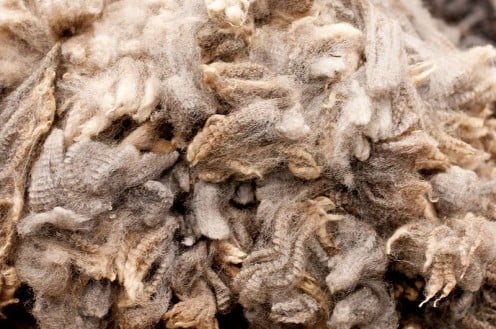
Other Wool Breeds
Among the other wool breeds which are important on this continent are the:
- Delaine
- Rambouillet
Both are of the merino family, but the wool is somewhat different. Delaine comes from two French words meaning "of wool." Delaine fibers are long and can be combed and spun to make strong, warm cloth.The Rambouillet sheep has coarser wool. Australian wool is now among the finest in the world, and there is a great demand for it.
It used to be that Australia possessed more sheep than any other country and Russia is next. In quantity and quality of wool produced, Australia was easily first, followed by the United States and Argentina.
Today, China produces twice the amount of wool as Australia. Other top wool producing countries are now (in order):
- India
- Iran
- Sudan
- New Zealand
- Nigeria
- United Kingdom
The United States no longer is on that list. A lot has changed in the last one hundred years.
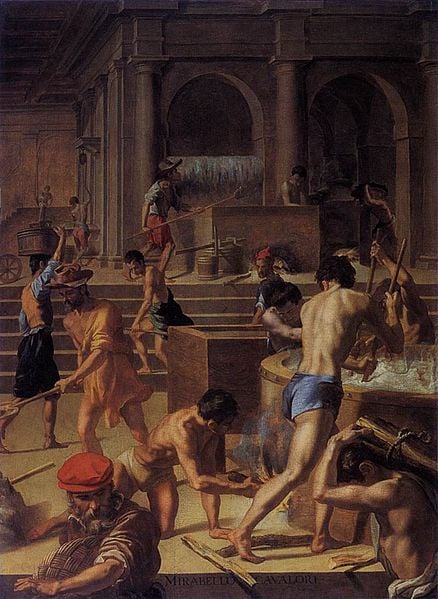
The History Of Wool
How long the sheep's wool has been woven into fabric we cannot tell, but the practice is very ancient. Though the ancient Egyptians as a race did not wear woolen garments because of their climate, we do know that some of them did wear wool.
As far back as history goes and still farther back in the production of wool as a great industry, from almost the beginning men have kept large flocks of sheep as part of their wealth. The Bible is full of references to the sheep and wool. Virgil, the Roman poet, knew all about the ins and outs of sheep farming, and his descriptions of the work of the shepherd might almost have been written today about the big sheep stations in other countries.
England's prosperity in the Middle Ages was built up largely on wool, as sheep farming was the principal national industry. England sheep produced fine wool that was exported and woven into cloth, chiefly by the skilled weavers of Flanders.
Later, Flemish weavers went to England, and the woolen manufacturing industry grew up, encouraged and protected by the kinds as a source of revenue. Edward III, for instance, prohibited the export of wool from England, and he also forbade the importation of fine woolen cloths from Flanders (today, Belgium, France, and the Netherlands), his purpose being to deprive foreign competitors of their raw material and to encourage the English weavers to produce the better and finer kinds of cloth that they had before neglected.
After a time the weaving industry became very important, and the splendid parish churches of East Anglia, almost like the cathedrals, are a testimony to the wealth and prosperity of that part of England, which was the first seat of the woolen industry.
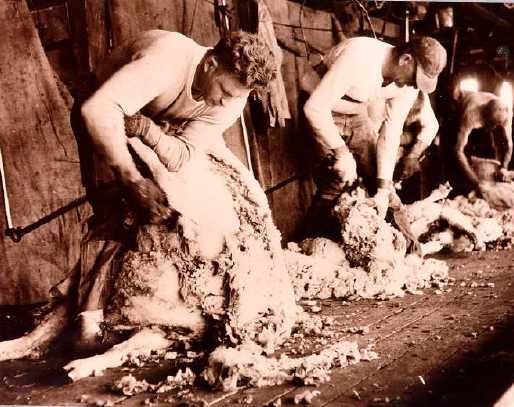
Wool In The New World
The first record of the manufacture commercially of cloth in the United States from wool is that of a fulling mill at Rowley, Massachusetts. This mill was built by Mr. Rowley's people, who were the first that set upon making cloth in this Western World
At the close of the eighteenth century the factory woolen industry was established in the United States. Soon there were about seven hundred mills engaged in the various phases of the woolen industry. That included scouring, carding, and combing of the fibers, yarn spinning, and the weaving of worsted or woolen cloth as well as the manufacture of woven felts. About seventy of those establishments were making wool carpets and rugs.
The manufacture of woolen cloth in Canada commenced soon after the arrival of the earliest colonists. Intendant Talon report in 1671 that the colonists were making practically all articles of clothing required. Many of the large woolen mills in Canada were the successors of the small carding plants then operated in connection with a grist mill or a sawmill. In the province of Ontario in 1820, the Honorable James Crooks founded a mill near Georgetown.
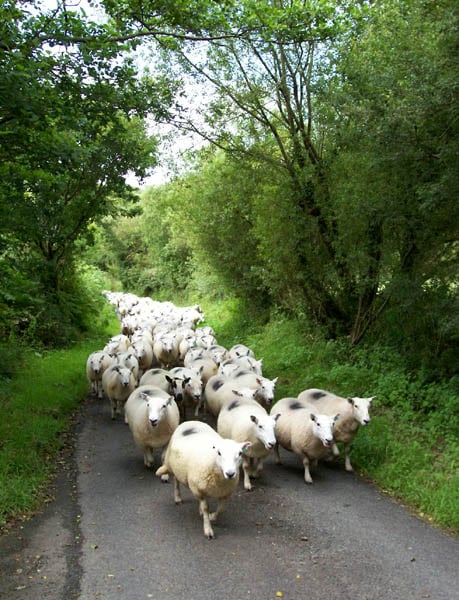
Woolen Or Worsted -- There Is A Difference
Wool is woven into two distinct kinds of cloth, one called woolen cloth and the worsted. The difference is due to each way the thread, or yarn, is prepared. Each has its advantages.
In the manufacture of worsted, the wool is combed to produce strands of the longer fibers known as "top." The purpose of this combing process is to do away with the shorter fibers and to arrange the long fibers in such a way that they will lie parallel in a long strand.
The tops are then drawn into finer strands called "roving," which are then spun and twisted into yarn.
In the manufacture of woolen yarn the fibers are not combed parallel as is the case with worsted yarn. Instead, the fibers are made to cross and mat together.
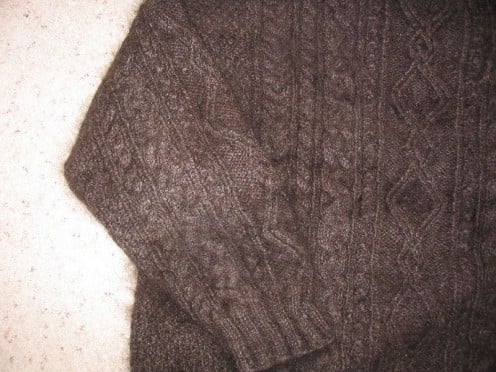
Why Wool Keeps Us Warm
The question is sometimes asked why a wool garment keeps us warm when a cotton or linen one does not. There is always a great deal of air between the hairs, or wool strands on the animals, back, and the fluffier the wool is, the more air is held by it.
Heat finds it very difficult to get across a layer of air, because the air is a bad conductor. So, whether the wool which holds a layer of air is on the animal's back, or on our back in the form of clothes -- it still keeps the body warm by the way it prevents the body heat from passing off into the atmosphere.
As a matter of fact, a wool garment will also keep us cool in summer as well as warm in winter, for just as it prevents the heat of the body from passing out, it prevents the heat of the sun and air from passing in.
Interestingly, back before refrigeration, that fact is the reason the iceman would take his ice through the streets covered with a thick wool blanket. He was saving it from being melted by the sun.








